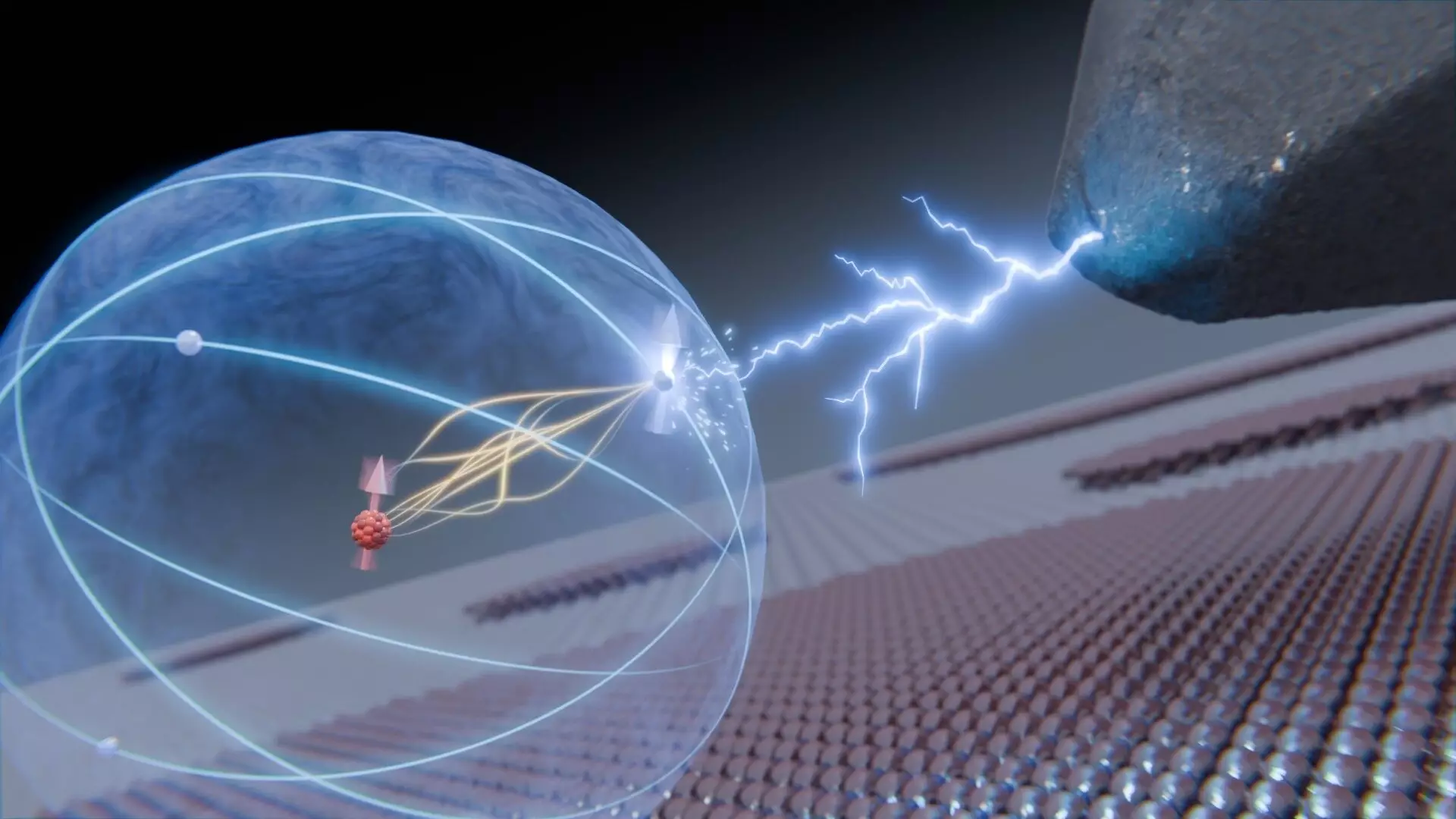In a pioneering study, scientists from Delft University of Technology have made significant strides in the field of quantum mechanics by manipulating the behavior of individual atomic nuclei. This groundbreaking research highlights a remarkable achievement where researchers successfully initiated controlled movement in the very core of an atom, focusing their efforts on the titanium isotope Ti-47. By understanding and influencing the interactions between atomic nuclei and electrons within the atom, this team has opened the door to novel methods for quantum information storage that could reshape the landscape of quantum computing.
At the heart of this research is the relationship between atomic nuclei and the electrons in their outer shells. The Ti-47 atom, which has one fewer neutron than its more common counterpart Ti-48, exhibits unique magnetic properties attributed to its nuclear spin. This atomic structure allows researchers to treat the spin as a quantum bit, where its orientation signifies a piece of quantum information. The challenge lies in how to effectively manipulate this spin, given its delicate position deep within the atom, surrounded by a vast atomic void.
The team faced significant hurdles, primarily due to the feeble hyperfine interaction that connects the nuclear spin with the spin of the outer electrons. This interaction is so weak that it necessitated specific experimental conditions, including highly precise magnetic fields, to achieve meaningful results. The research lead, Sander Otte, detailed the intricate nature of the experiments, where a voltage pulse was used to disrupt the equilibrium of the electron’s spin. This finely tuned approach ultimately allowed both nuclear and electron spins to resonate together for a brief moment, showcasing the principles foreseen by quantum theorist Erwin Schrödinger.
What makes this study particularly noteworthy is the validation that during the interaction between the nuclear and electron spins, no quantum information is lost. This discovery is crucial for the feasibility of using nuclear spins as stable reservoirs for quantum information. The ability to shield nuclear spins from external disturbances positions them as promising candidates for advanced quantum computing applications. The researchers’ success in maintaining information integrity encourages further exploration in the realm of quantum development.
While the potential applications for this research in quantum computing are expansive, the primary motivation of the researchers transcends mere technological advancement. As Otte observed, this experiment illustrates humanity’s capacity to manipulate matter on a scale previously thought unimaginable. The implications of mastering such atomic transitions may extend beyond computing, impacting fields such as materials science and nanotechnology. As researchers continue to explore the nuances of quantum mechanics, this exciting breakthrough not only enriches scientific understanding but also ignites curiosity about the profound capabilities of manipulating the minutiae of existence.
The work conducted at Delft University is setting the stage for future innovations that could profoundly change our interaction with quantum systems and, ultimately, the information technologies of tomorrow.

